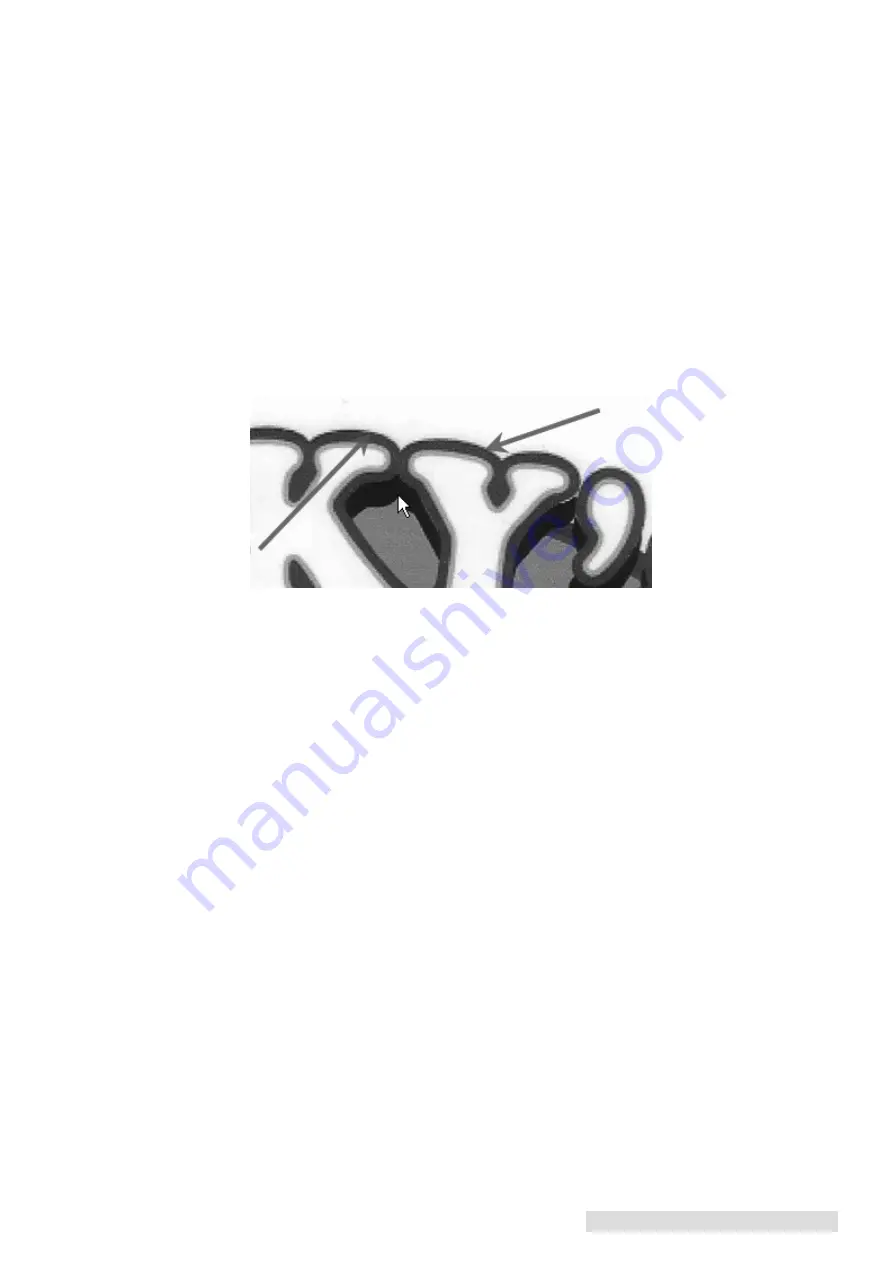
Troubleshooting and Maintenance 37
C. Color Matching and Design Tips
Whether you contract your graphic design or do it yourself, these guidelines will help you
get the best quality labels out of your LX2000e.
1.
Image Size/Shape.
The image size should correspond with the size of the label you will
be printing. Note: If the source image is smaller and must be enlarged to fill the entire
label space, this will affect the DPI. A 2" x 2" 300 dpi label blown up to fit on a 4" x 4"
label would have an effective DPI of 75. This would not be a sufficient resolution. See
item 2.
2.
Resolution.
Resolution is measured in dots per inch or dpi. 300 dpi is sufficient to get
the best possible quality from most images. A 72 DPI image will look fine on screen but
WILL NOT print well. Graphics and logos found on websites are typically 72 DPI. The
image below was printed from a 72 DPI image. Notice the jagged edges. Remember,
print quality settings found in the label printer driver will have no effect on improving
a low dpi source image.
On the other hand, resolutions higher than 300 DPI will not produce better quality but
may require more RAM to print and hard drive space to store. They could even slow
down the print process.
3.
Image File Format.
Most graphics are created in a graphic application. Since this
graphic application is not usually on the same computer as the label printer doing the
printing, it is necessary to export the graphic into a universal format that can be read
by other programs. We recommend TIF and BMP files for graphics. These formats are
uncompressed. JPG files also work well for graphics that include photographs. All
three formats can be imported into the BarTender application.
4.
Color Mode.
Set the color mode in the source graphic application to CMYK. In most
cases this will produce the most accurate color reproduction of the image on screen.
However, if CMYK is not producing the desired color matching try changing the
source image to RGB and then exporting the image again in one of the universal
formats mentioned above.
Note:
Often it is useful to request that your graphic designer provide you with several different formats for
you to try printing. For example you could request your image in six different formats: JPG, BMP,
and TIF in RGB color mode and a JPG, BMP and TIF in CMYK color mode.
5.
Media Type Setting.
Experiment with the Media setting in the printer preferences
(Section 4F) to achieve the best color matching. There are multiple media type options
which correspond with the various types of label stock sold by Primera. Match this
setting to the media installed in the printer to achieve the closest color match to the
screen. Each of these settings employs a slightly different color table developed
specifically for the media type listed.
If the printed output is not matching the color on screen, regardless of what media you
have installed you can adjust this setting to change the color output.
If you are still not getting the correct color output, the graphic designer may need to
change the color values of the source graphic to achieve the proper print output.
72 DPI Image printed with the LX2000e


























